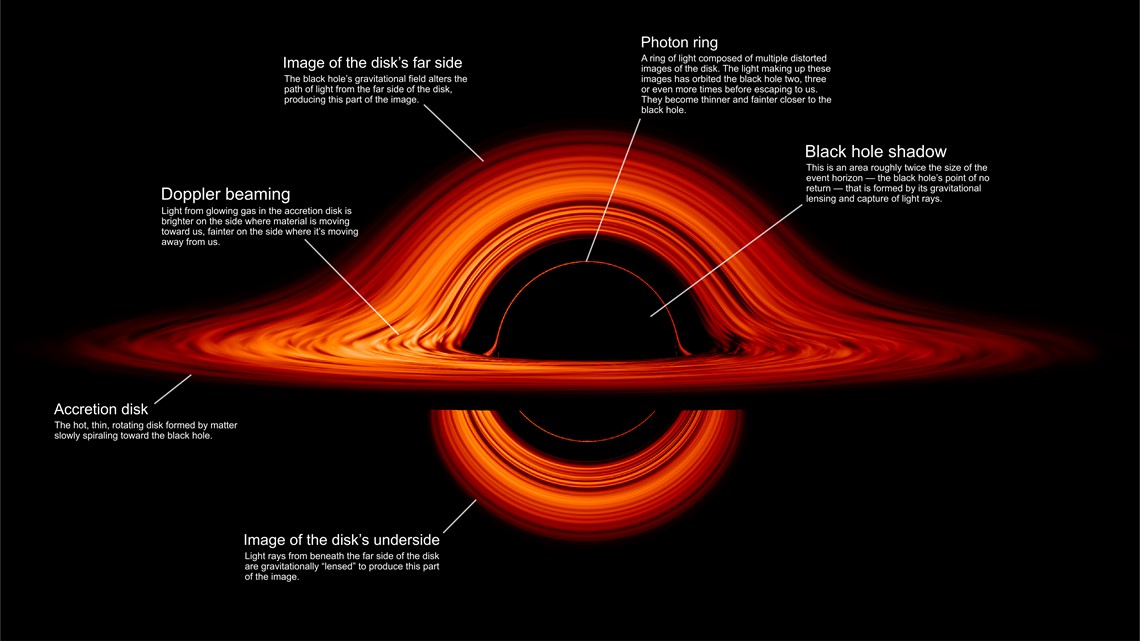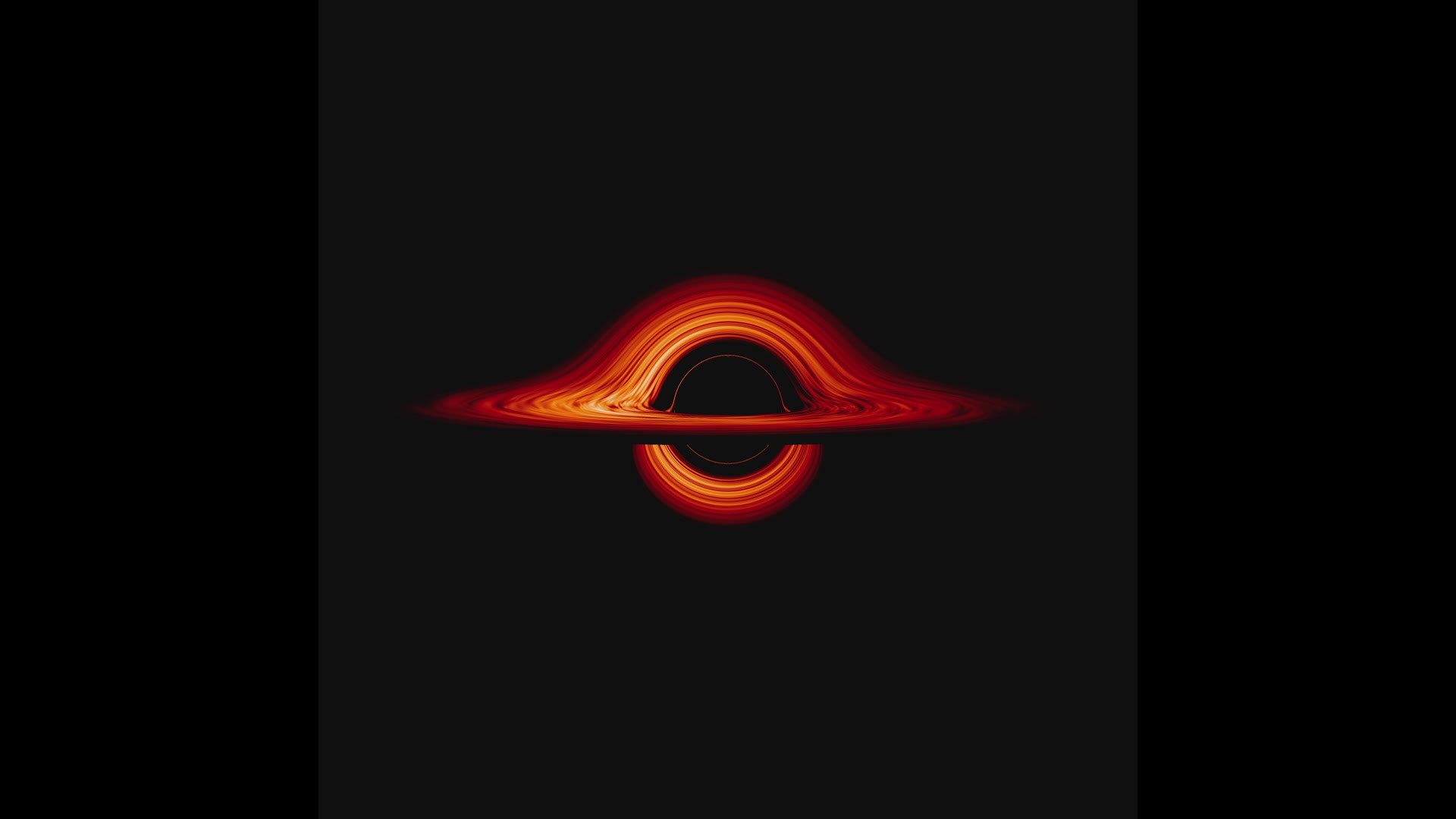NASA has released a new animation of a black hole that shows how gravity can skew light, distorting how humans see it. The agency compared it to looking in a "carnival mirror."
A black hole's gravity -- so strong that not even light can escape it -- alters the path of different light sources around it, thereby producing a warped image. How it is seen depends on the viewing angle. NASA says the greatest distortion happens when viewing it nearly edgewise.
Astronomers say visualizations such as this have mostly been left to the imagination and computer models. That changed on April 10 when the Event Horizon Telescope team released the first image of a black hole in galaxy M87.
"Simulations and movies like these really help us visualize what Einstein meant when he said that gravity warps the fabric of space and time,” said Jeremy Schnittman, who generated the images for the new animation at NASA's Goddard Space Flight Center.
Gas nearest to a black hole orbits at the speed of light, while gas on the outer portions spin more slowly.


Here is more from NASA on what the visualization represents.
"Viewed from the side, the disk looks brighter on the left than it does on the right. Glowing gas on the left side of the disk moves toward us so fast that the effects of Einstein’s relativity give it a boost in brightness; the opposite happens on the right side, where gas moving away us becomes slightly dimmer. This asymmetry disappears when we see the disk exactly face on because, from that perspective, none of the material is moving along our line of sight.
Closest to the black hole, the gravitational light-bending becomes so excessive that we can see the underside of the disk as a bright ring of light seemingly outlining the black hole. This so-called “photon ring” is composed of multiple rings, which grow progressively fainter and thinner, from light that has circled the black hole two, three, or even more times before escaping to reach our eyes. Because the black hole modeled in this visualization is spherical, the photon ring looks nearly circular and identical from any viewing angle. Inside the photon ring is the black hole’s shadow, an area roughly twice the size of the event horizon — its point of no return."

